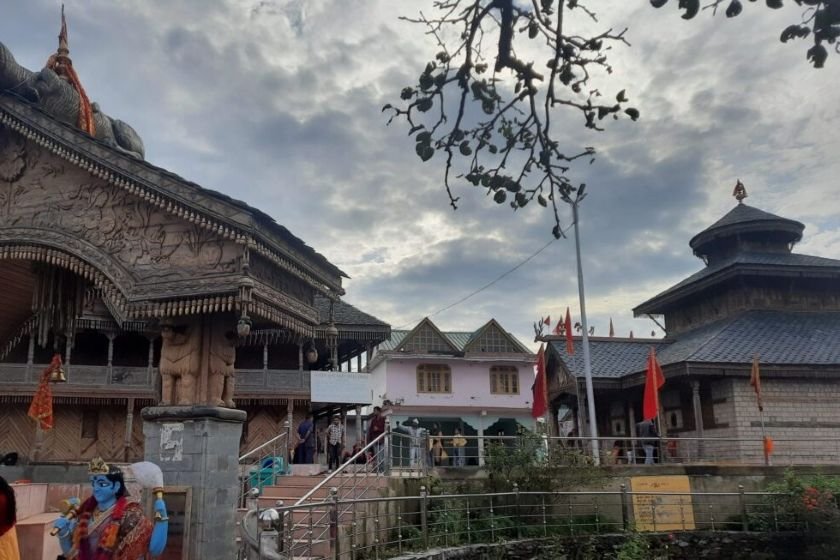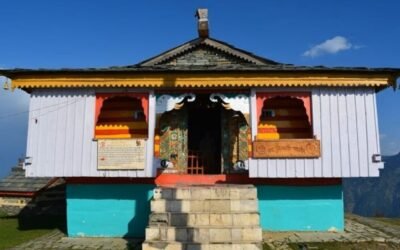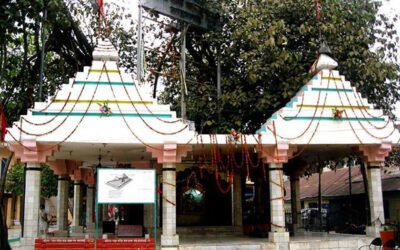Where the forest whispers her name, and the architecture tells her story
Tucked in the tranquil folds of Chindi village, about 14 km before Karsog town in Mandi district, the Chindi Mata Temple—also known as Chandi or Chhindi Mata Temple—is a mystical Shakti shrine dedicated to Goddess Durga in her fierce form as Chandi. Surrounded by apple orchards, pine forests, and Himalayan silence, this temple is a spiritual and architectural gem, steeped in local legend and Suket dynasty heritage.
🌄 Location & Accessibility
- Location: Chindi Village, Karsog Valley, Mandi District, Himachal Pradesh – 175011
- Altitude: ~1,400 meters
- By Road: 90 km from Shimla, 14 km before Karsog on NH-305
- By Rail: Shimla Railway Station (~90 km)
- By Air: Jubbarhatti Airport, Shimla (~100 km)
- On Foot: A short walk from the main road through cedar-lined paths
🕉️ Deity & Worship
The temple is dedicated to Goddess Chandi, a fierce eight-armed (Ashtabhuji) form of Durga, worshipped here as Chindi Mata, the protector of the valley. According to legend:
- The temple’s layout was revealed by ants, who traced the blueprint on the ground—hence the name “Chindi”
- The goddess is believed to have traveled through nearby villages, blessing some and cursing others, before choosing Chindi as her abode
- She is worshipped alongside Lord Vishnu, whose idol also resides in the sanctum
Devotees offer red cloth, coconuts, and ghee lamps, and the temple is especially visited by those seeking protection, fertility, and fulfillment of vows.
🏛️ Architecture & Setting
The Chindi Mata Temple is a multi-storeyed wooden marvel, featuring:
- Pagoda-style roofs with animal motifs like tigers, deer, and eagles
- Totem-painted ceilings, floral carvings, and murals of Ganesh, serpents, and lions
- A circular stepwell outside the temple, used for abhishek rituals
- A two-storey langar and storage hall opposite the main sanctum
The temple’s wooden wind chimes, slate roofs, and stone-and-wood fusion make it a rare example of Himachali folk architecture.
📜 Mythological & Cultural Significance
- The goddess is said to have appeared as a girl, traveling from Jufar to Shiva to Bajo to Bakhrot, blessing and cursing villages along the way
- She declared Bajo as her maternal home, promising to return every 3–5 years—a tradition still honored today
- At Bahog, she slayed demons who disrespected her and cursed the land to remain barren—a prophecy that holds true even now
The temple falls under the ancient Suket dynasty, and its devta processions and oral traditions are still preserved by local priests and villagers.
🎉 Festivals & Celebrations
- Shravan Fair (July–August): Celebrated with folk dances, community feasts, and devta processions
- Navratri: Marked by Durga Saptashati recitations, aartis, and offerings
- Daily Worship: Morning and evening aartis, incense offerings, and lighting of ghee lamps
🏞️ Nearby Attractions
- Mamleshwar Mahadev Temple: A Pandava-era Shiva shrine with an eternal flame
- Kamaksha Devi Temple: A Shakti temple with exquisite wooden carvings
- Shikari Devi Temple: A roofless shrine atop the highest peak in Mandi
- Apple Orchards & Forest Trails: Ideal for nature walks and spiritual solitude
🙏 Spiritual Experience
The Chindi Mata Temple is not just a shrine—it is a living legend, a place where ants drew the goddess’s home, and the hills still echo her journey. As you step into its carved sanctum, with the wind chimes singing and the scent of cedar in the air, you feel the presence of a goddess who chose her temple with care and fury. It is a temple where architecture becomes myth, and the **soul finds its map in the footsteps of the divine.




